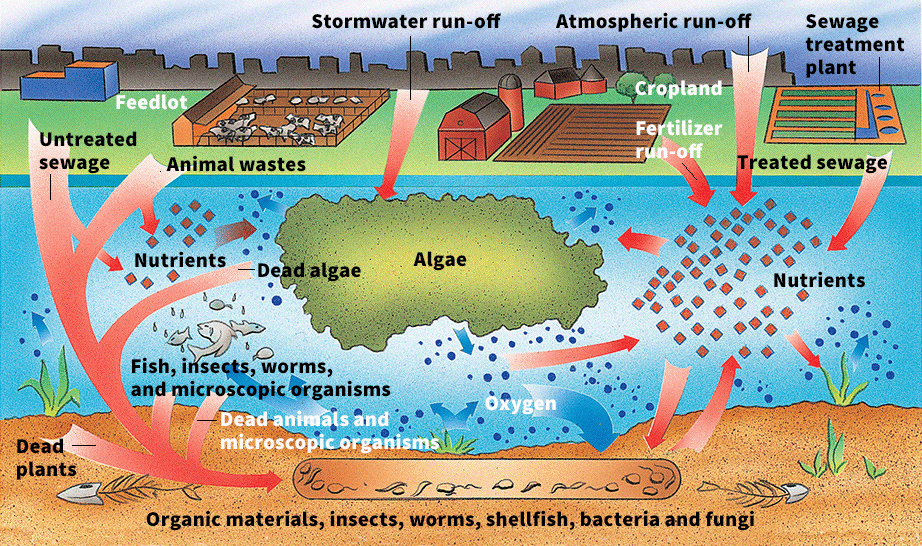EPA Declares More Than Half of U.S. Rivers In Poor Condition For Aquatic Life
March 28
The U.S. Environmental Protection Agency (EPA) released the results of a study on March 26 that revealed that 55 percent of rivers and streams in the United States were in poor biological condition for aquatic life. Nutrient pollution–phosphorus and nitrogen runoff from cities and farms that enters into rivers and streams–formed the major problem within the 1.2 million miles (1.9 million kilometers) of U.S. waterways.
Large amounts of nutrients in water lead to problems for many animals that live in water. Unnaturally high levels of nitrogen and phosphorus–which are the major components of fertilizer in agriculture and waste in sewage systems–leads to a process known as eutrophication. The excess nutrients benefit algae and allow them to grow much faster. But, an overgrowth of algae, called algal bloom–decreases the amount of oxygen in the water, which leads to the death of fish and other aquatic life. In addition, some algal blooms create poisons (toxins) that are harmful or even fatal to humans.

Excess nutrients from such sources as fertilizers and untreated sewage upset the balance in aquatic systems. This process is called eutrophication. The algae grow faster than the fish can eat them. As more algae grow, more also die and block light needed by aquatic plants. Bacteria use up much oxygen consuming the excess dead algae. The oxygen level of the water drops, causing many aquatic plants and animals to die and decay, using still more oxygen. (WORLD BOOK illustration by Michael Yurkovic)
According to the EPA, their study indicated that the western United States had the best stream and river quality, with 42 percent in good condition. In the East and the plains, only 17 percent and 16 percent, respectively, of waterways were in good condition.
Additional World Book articles:
- Environmental pollution (2008 back in time)
- Water pollution
A website of interest:


